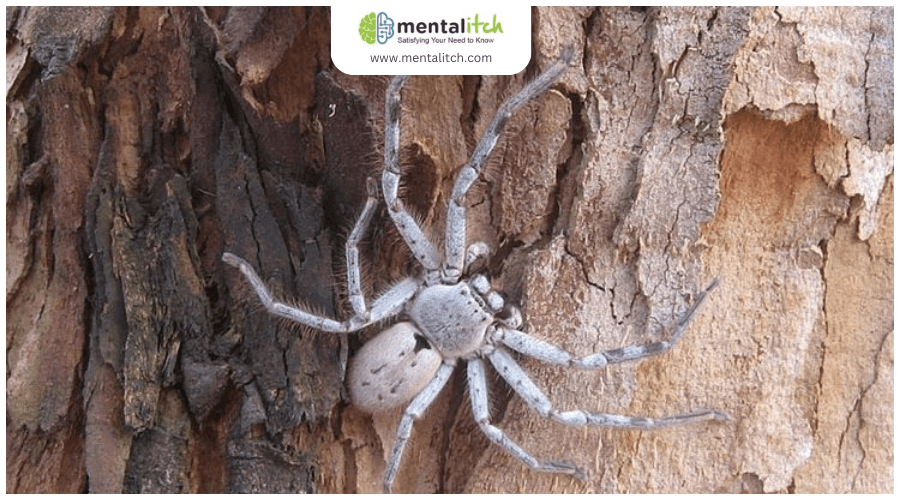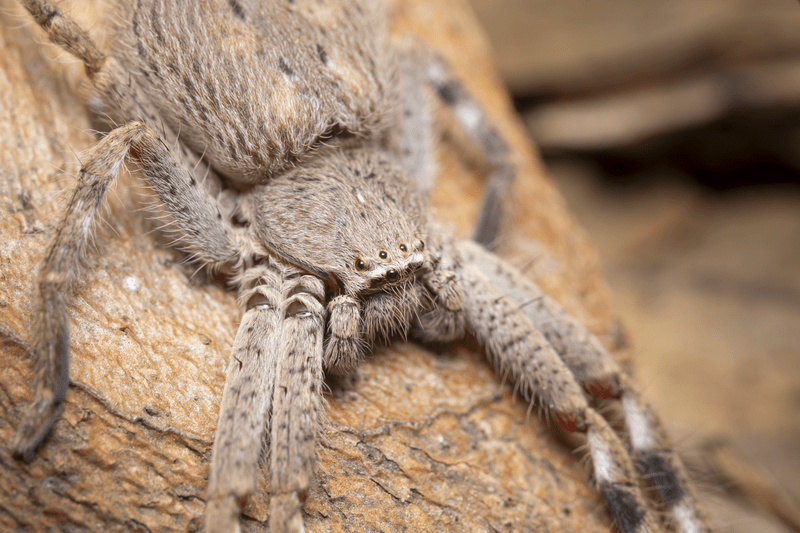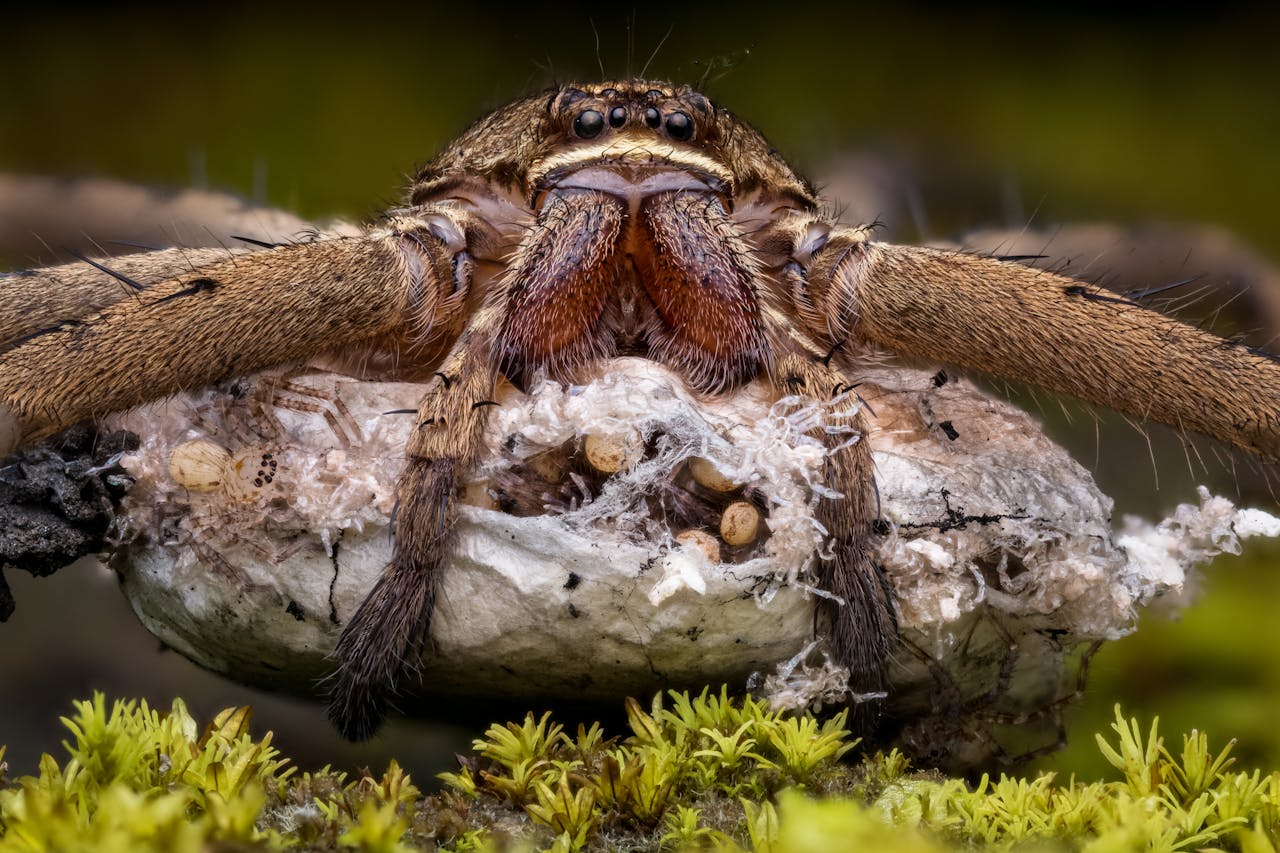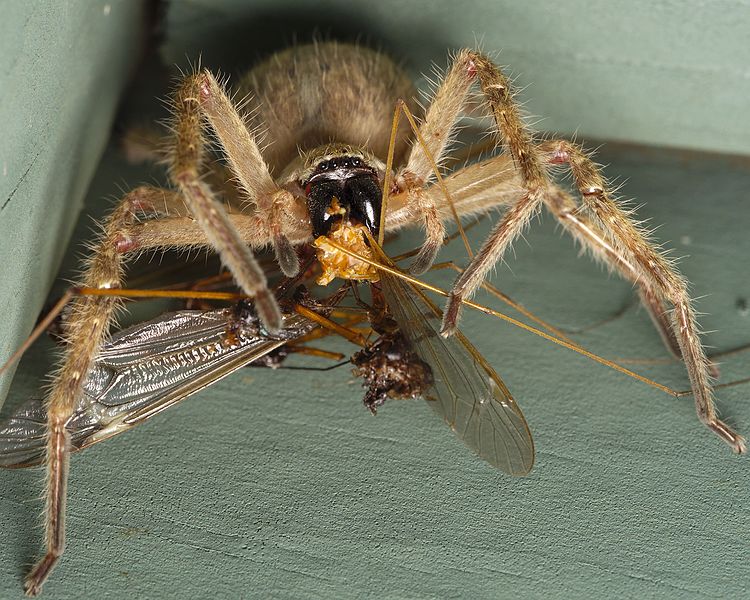Imagine a ninja, blending into its surroundings, striking with precision and vanishing without a trace. This is the essence of the Huntsman Spider’s hunting method. You’ll find its agility remarkable, as it dashes across surfaces with a speed that belies its considerable size. Its long, slender legs aren’t just for show; they’re tools that enable it to ensnare its prey with a precision that’s almost artistic. But there’s more to its hunting prowess than just speed and agility.
As we explore further, you’ll uncover the secrets behind its exceptional camouflage and why it doesn’t rely on webs like its arachnid cousins, setting a stage for a fascinating discussion on this extraordinary predator.
Exceptional Agility
Huntsman spiders’ exceptional agility, marked by their long, slender legs, enables them to move swiftly and silently, outmaneuvering their prey with ease. These stealthy predators use their quickness not just for movement but as a critical component of their hunting strategy. Their swift movements allow them to capture prey with remarkable precision, showcasing their extraordinary hunting skills. Unlike many other spiders that rely on webs, huntsman spiders use their agility to chase effectively and surprise unsuspecting prey.
Their long legs aren’t just for show; they’re the key to their agility. This agility allows huntsman spiders to outmaneuver their meals, closing in before their prey even realizes what’s happening. It’s this combination of speed and surprise that makes them such successful hunters. They don’t just wait around; they actively pursue their prey, using their remarkable skills to secure a meal.
Camouflage Mastery
Beyond their agility, huntsman spiders also master the art of blending into their surroundings, making them formidable ambush predators. Their expertise in camouflage isn’t just a trait; it’s an art form. With earth-toned coloration and intricate patterns, they don’t just hide; they become one with their environment. This natural disguise plays a critical role in their hunting strategy, enabling them to launch surprise attacks on their prey.
Huntsman spiders’ flattened body shape further aids in their stealth. They can slip into narrow gaps and hide under bark, virtually disappearing thanks to their cryptic appearance. This ability isn’t just about evasion; it’s about patience. They wait, unseen and undetected, before pouncing on their prey with unmatched precision.
Their earthy coloration isn’t just for show; it’s a key element of their disguise. It allows them to seamlessly merge with their surroundings, staying hidden from both predators and their next meal. By leveraging their camouflage skills, huntsman spiders embody the essence of an ambush predator. Their patient approach, combined with stealth and precision, showcases a hunting method built on surprise, ensuring their success in the wild.
Nocturnal Predation
As night falls, huntsman spiders emerge as skillful nocturnal predators, adeptly using the cover of darkness to ambush and capture their prey. They’re not just your average nighttime crawlers; they’re experts at navigating the nocturnal world to secure their next meal.
Here’s what sets them apart as nocturnal hunters:
- Keen eyesight: Their exceptional vision thrives in low-light conditions, giving them a critical edge in spotting prey at night.
- Speed and agility: Huntsman spiders are incredibly fast and agile, enabling them to pounce on their quarry with precision.
- Stealthy movements: They move with such stealth, their prey hardly notices them until it’s too late.
- Ambush tactics: Using the element of surprise, they ambush unsuspecting prey, making their night hunting highly effective.
- Nocturnal advantage: The darkness of night provides the perfect backdrop for these spiders to avoid predators and successfully hunt.
Their nocturnal predation is a testament to their adaptation to night hunting, leveraging their natural abilities for successful hunts. As nighttime predators, huntsman spiders exemplify nature’s cunning, utilizing speed, stealth, and keen eyesight to dominate the nocturnal landscape.
Diverse Diet
Often, huntsman spiders showcase their adaptability through a remarkably varied diet, feasting on everything from insects to small vertebrates. As skilled predators, they use ambush hunting strategies, leveraging their nocturnal habits to surprise and capture a wide range of prey. These spiders are not just hunters; they’re essential to maintaining ecosystem balance. By controlling insect populations, they help keep our environment in check.
Huntsman spiders inject venom to immobilize prey, then use enzymes for digestion, efficiently sucking up the nutrients. This process is essential for their survival and allows them to thrive in diverse habitats. Their diet is a confirmation to their hunting prowess and adaptability, making them an essential player in the ecosystem.
Here’s a glance at what huntsman spiders might have on their menu:
| Prey Type | Hunting Method | Ecosystem Role |
|---|---|---|
| Insects | Ambush Hunting | Pest Control |
| Small Vertebrates | Quick Pouncing | Population Balance |
| Arachnids | Nocturnal Strategies | Biodiversity |
| Myriapods | Venom Injection | Soil Aeration |
Through their diverse diet, huntsman spiders not only showcase their skilled predation but also play a pivotal role in helping maintain the ecosystem.
Non-Web Hunting
Moving from their diverse diet, let’s explore how huntsman spiders employ their non-web hunting techniques, relying on speed and agility to catch their prey. Unlike their web-weaving counterparts, these remarkable spiders have developed a hunting method that’s as impressive as it is efficient. Here are key aspects of their strategy:
- Speed and Agility: Huntsman spiders are incredibly fast and agile, allowing them to swiftly chase down their prey.
- Stealth and Ambush: They excel at remaining undetected until the perfect moment to strike, utilizing both stealth and the element of surprise.
- Exceptional Eyesight: Their ability to spot prey from a distance without the aid of a web is attributed to their exceptional eyesight.
- Quick Reflexes: Huntsman spiders can react instantaneously to movements, making their pounce deadly and accurate.
- Camouflage and Silent Movements: They blend into their surroundings and move without making a sound, sneaking up on their prey unnoticed.
This non-web hunting approach, focusing on speed, agility, and stealth, showcases the huntsman spider’s adaptability and predatory skills. They don’t just wait for their next meal to come along; they actively seek it out, making them fascinating and unique hunters in the spider world.
Sensory Precision
Huntsman spiders leverage their specialized sensory organs to pinpoint prey with incredible accuracy, enhancing their hunting efficiency. These adept hunters are equipped with slit sensilla, highly specialized sensory organs located on their legs. These remarkable structures enable them to detect the slightest vibrations and air movements, a key aspect of their hunting precision.
Their sensory abilities allow them to track and capture prey with remarkable accuracy. This sensory precision is not just an add-on; it’s central to their hunting methods, making them highly effective predators. By sensing even the subtlest movements through their slit sensilla, huntsman spiders can swiftly respond, ensuring their success in capturing meals.
Here’s a quick breakdown of how these sensory abilities play a role in their hunting tactics:
| Feature | Function | Impact on Hunting |
|---|---|---|
| Slit Sensilla | Detect vibrations | Enhances hunting precision |
| Specialized Sensory Organs | Sense air movements | Increases ability to locate prey |
| Sensory Precision | Detects minor prey movements | Improves tracking and capturing |
| Hunting Methods | Non-web based, relies on sensory input | Makes them effective predators |
These spiders’ unique combination of sensory precision and non-web-based hunting methods sets them apart in the arachnid world, showcasing their remarkable efficiency as hunters.
Conclusion
So, you’ve now discovered what sets the Huntsman Spider apart in the hunting game. Its exceptional agility and camouflage mastery allow it to surprise prey like a stealthy ninja. Hunting at night, it broadens its chances by preying on a diverse menu, without relying on webs. Instead, it uses its precise senses to track down dinner. All these traits make the Huntsman Spider a unique predator, mastering the art of the hunt in ways that few other spiders can match.



